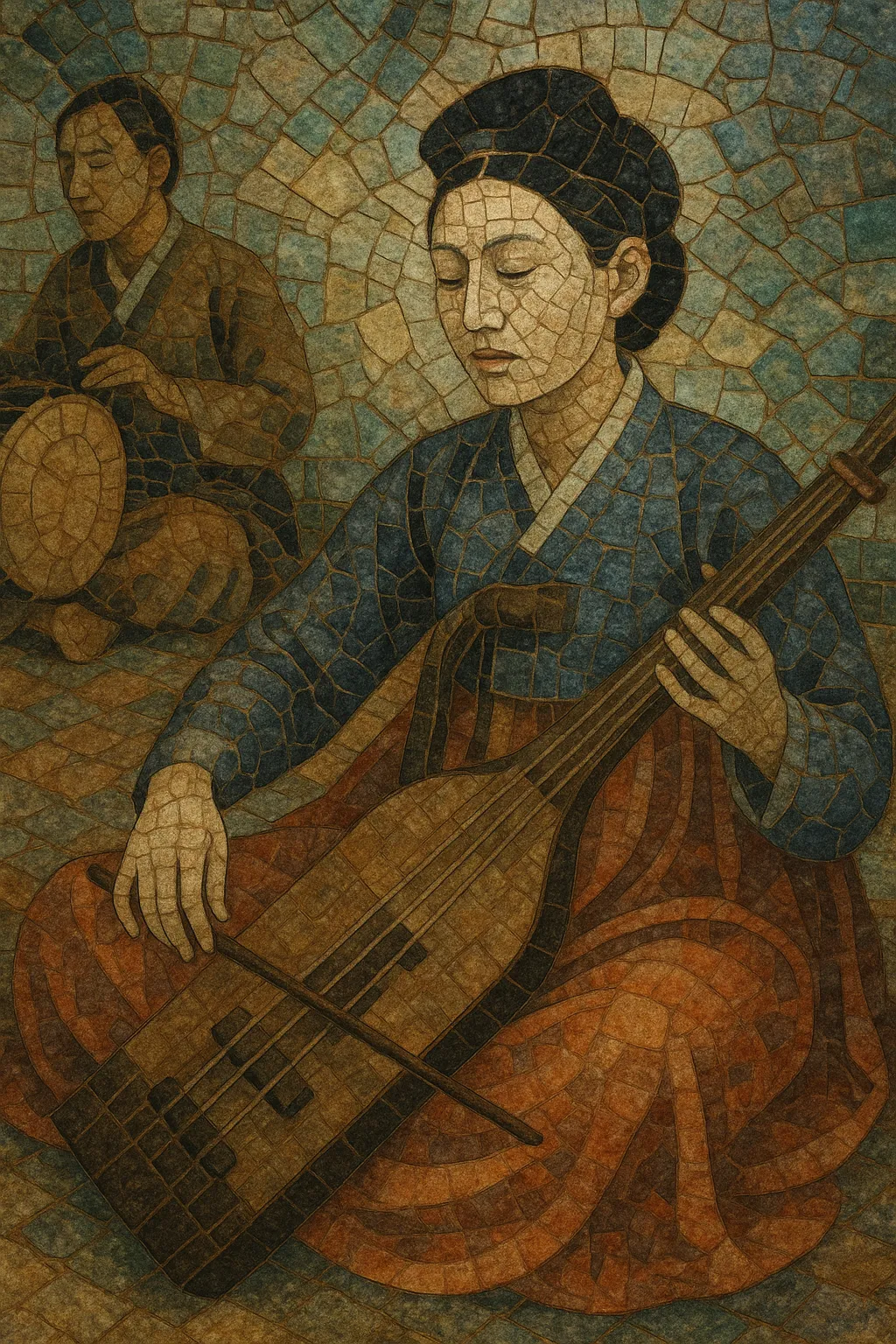Kagok (also romanized as Gagok) is a refined Korean art-song tradition from the late Joseon period, sung to classical sijo and gasa poetry and accompanied by a small jeongak (court/chamber) ensemble.
It is characterized by long-breathed melodic lines, subtle modal shifts (notably pyeongjo and gyemyeonjo), and delicately ornamented vocal delivery over slow, cyclical jangdan (rhythmic patterns). Performances come in male (namchang) and female (yeochang) versions, each with characteristic range, tessitura, and modal color.
Recognized by UNESCO (2010) as Intangible Cultural Heritage, kagok embodies elite literati aesthetics—restraint, balance, and nuance—where voice and instruments interweave heterophonically to elevate the text’s imagery and sentiment.
Kagok crystallized in the Joseon dynasty as literati set sijo and gasa poetry to music, adapting court and chamber practices (jeongak) for intimate vocal performance. By the 17th–18th centuries, a distinct repertory, modal vocabulary (pyeongjo/gyemyeonjo), and slow cyclical jangdan had coalesced into the kagok idiom.
Rooted in elite salons, kagok emphasized refinement: measured breath control, restrained ornamentation, and balanced ensemble textures (gayageum, geomungo, haegeum, piri/daegeum, and janggu). Male (namchang) and female (yeochang) versions developed with complementary ranges and modal shadings, preserving the poetic cadence of sijo and gasa.
Colonial disruption and rapid modernization reduced courtly patronage and public familiarity. From mid-20th century onward, Korea instituted cultural-preservation systems (e.g., Important Intangible Cultural Property No. 30) to transmit repertoire and technique via designated masters and training centers, stabilizing performance practice.
In 2010, UNESCO inscribed “Gagok, lyric songs of the Joseon Dynasty,” highlighting its historical depth and living pedagogy. Today kagok thrives in concert halls, conservatories, and recordings, and informs contemporary ‘changjak gugak’ (creative/traditional fusion), ensuring continuity while encouraging sensitive innovation.


